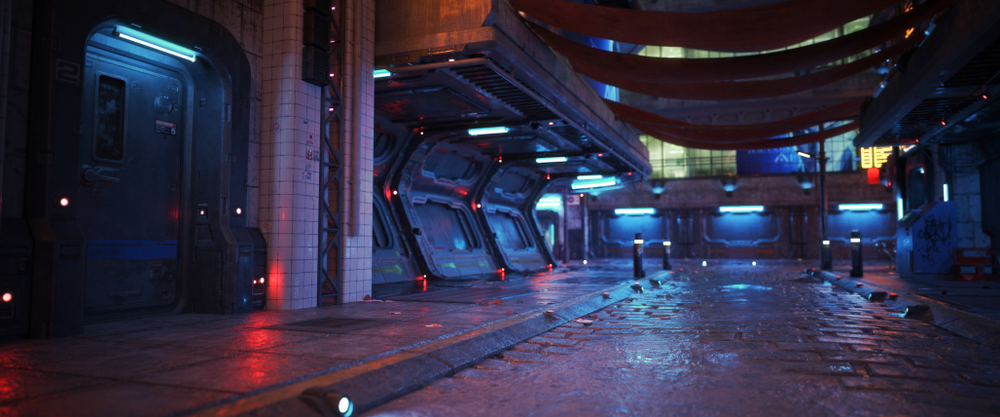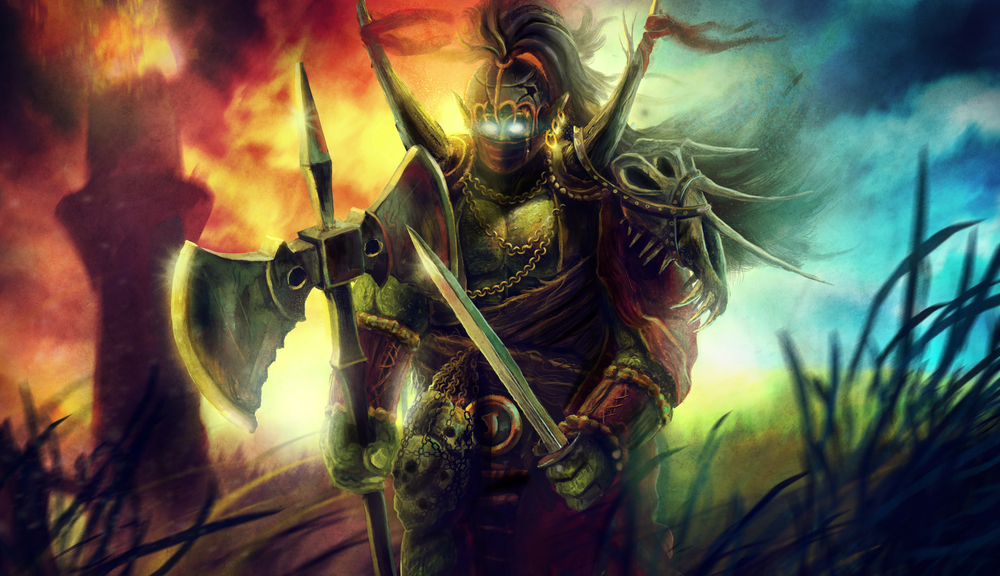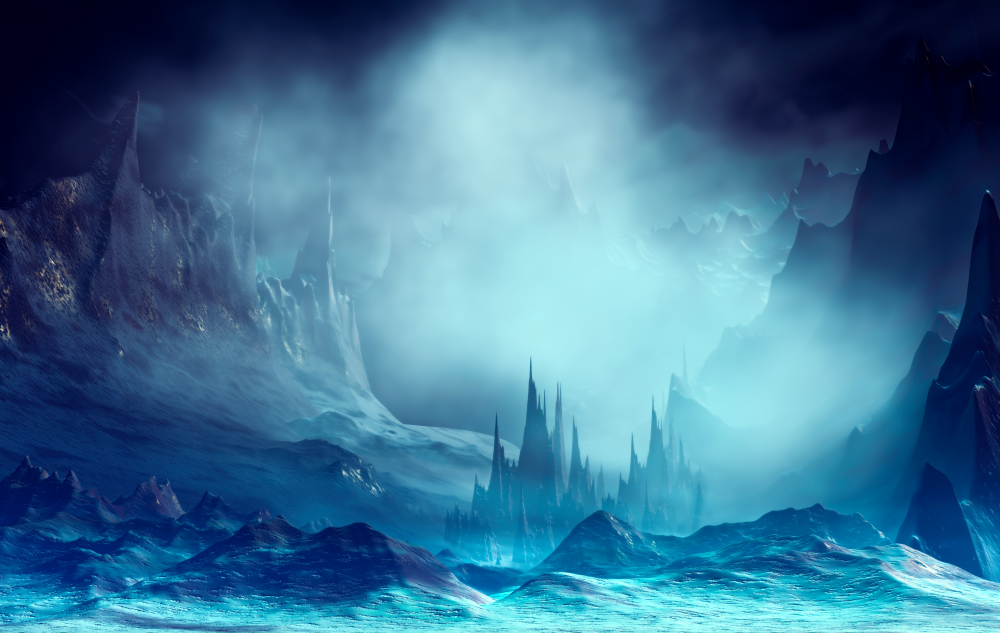You may have stumbled upon the term “GameLit” on any online gaming forum. It is also possible that you have seen it in any literary or book club.
The way GameLit is being discussed on forums that are polls apart tells us how all-encompassing this new art form is.
Yes, GameLit, the abridged form of Game Literature, is an art form. It is a genre of fiction whose landscape is set in the gaming world.
Therefore, the storylines in GameLit material are heavily crammed with direct elements of a game such as fights, stages, survival, chasing, destruction, etc.
The term GameLit has been around only for a couple of years, and as a genre, it is still evolving.
However, it is quickly carving out its place among the fictional literature that is being written for the younger audience.
In this article, we will try to cover what constitutes GameLit and how it is compared to LitRPG, which is another term you may have seen on the internet.
We will also cover some famous books and authors of this sprouting fictional literature.
The Anatomy of GameLit
GameLit is an umbrella term underlining any fictional content that is intertwined heavily around gaming motifs and themes. It usually branches into four sub-genres that are already popular gaming genres. These four sub-genres are:
- Dungeon
- RPG (Role Playing Games)
- FPS (First Person Shooter)
- Card/Strategy Games
As mentioned earlier, GameLit is still an evolving literary genre. Therefore, this list is tentative and can grow and change in the future. Among the existing sub-genres of GameLit, LitRPG is undoubtedly the most popular. Until now, the majority of literature produced under the umbrella of GameLit belongs to this sub-genre.
The Foundation of GameLit

GameLit is the literature that relies on game-like settings to progress its storyline and develop its characters. However, this description is not enough to give a better insight into this term. We need to look at the universal literary genres and elements that make the basis of GameLit.
If we go through the available GameLit content, we can say it actually stands on the pedestal that is made of:
- Sci-Fi
- Fantasy
- Neo-Noir
Over the years, we have seen how games have progressed with their gameplay, storylines, and avatars. The technology has made it easy for creators and developers to depict sci-fi and fantasy elements in their best form. This is the reason why the majority of popular computer and console games fall either under fantasy or sci-fi category. Since GameLit heavily borrows from those games, the literature published under this category also belongs to these literary genres.
The other recurring theme you can find in GameLit books is Neo-Noir. This is a visual style that represents a dark and sinister ambiance with an element of mystery. It is a popular film genre that seeped into gaming and now has also become a part of GameLit.
Besides these three main ingredients that you will find in almost all GameLit literature produced to date, there are some particular themes or settings that are used to exhibit those three literary elements.
Urban: A sci-fi/fantasy story set in a sprawling urban setting
Epic: Epic was initially a poetry genre. Now it has been used across all mediums from theater to films and music to novels. This genre heavily relies on the tropes of heroism, grandeur, and spectacle. Usually, historical events are used to create epic themes.
Portal Fantasy: A person moving from one world to the other in the blink of an eye with some sort of magic is a popular element in stories for a long time. Even many ancient stories have used this element of fantasy. In GameLit, portal fantasy is played out on the premise of sci-fi.
Dystopia: It is a sub-genre of speculative fiction that envisages a future with a lot of technological development but decaying social and moral values with a totalitarian regime in place. The dystopian portrayal is also quite popular in GameLit literature.
Cyberpunk: Cyberpunk has been around since the 80s by different names. It can also be categorized as a sub-genre of dystopia. However, the term “high-tech noir” defines it better. What differentiates dystopian and cyberpunk settings are their aesthetics. The latter is high on neon and high-resolution colors with synthwave music. It is now also evolving as a strong motif in GameLit literature.
Speculative tech: This is a sub-genre of sci-fi that extensively shows fictional technology and gadgets that don’t exist in reality in any form.
These six motifs are not mutually exclusive. GameLit literature can use them in combination to create its storyline. For instance, combining epic with portal fantasy or using speculative tech with the existing urban settings. If we look closely, all these elements essentially belong to science fiction, fantasy, or noir in one way or the other.
GameLit vs. LitRPG

By the time you reach this section, you would already know the difference between GameLit and LitRPG.
However, it is still better to categorically explain the difference between the two once and for all.
To begin with, GameLit is the general term used for every piece of literature (novels, series, short stories, etc.) that uses game-like settings and avatars for its plot and characters.
On the other hand, LitRPG is the sub-genre of GameLit, just as RPG is the sub-division of video games.
The confusion arises because many people use these terms interchangeably, and this happens due to the immense popularity of LitRPG books.
Over 90% of GameLit novels and stories that are available online belong to the LitRPG sub-genre.
So, any LitRPG book can be called GameLit book. However, not every GameLit book belongs to LitRPG since Dungeon and FPS are also its sub-genres.
History of GameLit
The term “GameLit” has been coined within the last decade. People can trace its origin to 2013 when some books were published with RPG game themes and plotlines and termed as GameLit and LitRPG by their authors.
The trend of using the keywords “GameLit” and “LitRPG” to describe books in their Amazon descriptions has also started in the last 3-4 years.
But interestingly, the essence of GameLit literature exists way before the birth of this term. Authors have been using the literary trope of creating a game-like environment for a long time.
The first noteworthy book of this genre was written by Steven Barnes by the title Dream Park in 1981. The book used the environment of a live-action role-playing game in its plot.
With the arrival and popularity of multi-player role-playing games in the 90s, many authors forayed into sci-fi writing that will use game worlds to weave the plots.
However, the recent wave of popularity of this literary genre is linked to a Russian Novel that came into the market in 2012 under a publishing initiative called LitRPG Proper— this was the first time when this term was formally used.
In the following years, several Russian novels came with the same thematic. They also got translated into English that widens the scope of this new genre.
Now, seven years later, there exist hundreds of GameLit books published in different languages and read by people all around the world.
Notable GameLit Authors
GameLit is the youngest sub-genre of literature. However, many writers have made their mark in this short time.
Let’s look at some of the popular writers that are exhibiting their wizardry of words in this unique domain of literature.
D.Rus
D. Rus was that Russian author who sent ripples across the sci-fi genre with his 2013 Novel called AlterWorld.
This was the first time when a novel used the gaming elements in so much detail and an interesting manner. In the last seven years, D. Rus has attained the status of a pioneer and master writer of GameLit in general and LitRPG in particular.
D. Rus is not a stereotypical fantasy writer. He is a young lad living in urban Russia.
In the last seven years, Rus has penned seven play-to-live books, including the famous AlterWorld, The Duty, Inferno, and The Clan. All these books are available in English translation.
Aleron Kong
If D. Rus is the creator of the LitRPG genre, Aleron Kong is the architect of American/English LitRPG.
Kong wrote its first LitRPG novel The Land: Founding in 2015. It was set in a fantasy place called the Land, where the main character Richter lets go of this old life and molds into a new person altogether.
Aleron Kong shot to fame among the fans of GameLit genre with his first book.
Kong has written several parts of The Land series in the last five years, with every part featuring one distinctive theme (monsters, raiders, predators, etc.).
People love his writing for its portrayal of action, dark humor, and the construction of epic world settings.
Trivia: Aleron Kong is a real-life medical doctor
Edward Brody
Edward Brody is an LA-based GameLit writer.
His Eden’s Gate series is one of the most popular LitRPG series on the block. Brody has now embraced GameLit writing as a full-fledged profession.
Now, he travels around the world and continues to write new Eden’s Gate parts.
Brody has used portal fantasy to create this series where Gunner Long (the protagonist) is transported into a world full of adventure, magic, and mystery that is in complete contrast to his apartment and 9-5 job.
Blaise Corvine
Blaise Corvine is the creator of Delvers LLC that is a GameLit series centered on portal fantasy (as claimed by the writer himself).
Corvine has now also taken other authors on board who write stories that are set in Ludus— the fictional land of Delvers LLC.
Corvine is a Texas-based US Army veteran who is writing full-time at the moment.
Edward Castles
Edward Castles is the writer of the famous Unbound DeathLord series. This series tells the story of a man who is running from his past and takes refuge in the game where he has to run an undead race.
People love Castles writing due to its perfect balance of realistic and fantastical storytelling.
Travis Bagwell
Travis Bagwell is the creator of Awaken Series— a high school story mixed with the game world. Readers have a polarizing view of Bagwell’s writing and books.
Some people love the element of high school drama he has put in this GameLit book. On the other hand, some think that the book should have been more immersive with its gaming elements.
James Hunter
James Hunter is the author of one of the most popular LitRPG books of the last three years called Viridian Gate Online.
It is a dystopian/urban fantasy GameLit book where one has to enter this virtual world of Viridian to avoid complete extinction that is soon to happen due to a fast-approaching asteroid.
Hunter has written four books of this series. The first part of this series is the most popular one, with over 200,000 copies sold until now.
Michael-Scott Earle
Michael-Scott Earle is a promising new writer of the genre. The story of his first book Lion’s Quest:
Undefeated plays out at a meta-level where Leo, the protagonist, is a gamer who has bored of the virtual reality games he is currently playing. Soon, Leo stumbles upon a world that is beyond fantastic.
Popular GameLit Books
We have discussed some popular GameLit books along with their writers in the above section.
However, there are hundreds of GameLit novels out there, with each one having hundreds and thousands of avid dedicated readers.
Therefore, we are going to put a list of some of the popular GameLit series and novels here.
| Title | Author’s Name |
| Dungeon Calamity (The Divine Dungeon Book 3) | Dakota Krout |
| The Twilight Obelisk (Mirror World Book #4) LitRPG series | Alexey Osadchuk |
| Dungeon Lord (The Wraith’s Haunt – A litRPG series Book 1) | Hugo Huesca |
| Rapture (Apocalypse Gates Author’s Cut Book 1) | Daniel Schinhofen |
| The Pantheon Moves (Emerilia Book 10) | Michael Chatfield |
| Dungeon Player: A LitRPG Dungeon Core Adventure (Glendaria Awakens Trilogy Book 1) | Jonathan Brooks |
| The Trapped Mind Project (Emerilia Book 1) | Michael Chatfield |
| Alpha Test Subject #3435: A Roguelike LitRPG Adventure (Chronicles of Alamor Book 1) | Adam Myhr |
| Accidental Thief: Book One in the LitRPG Accidental Traveler Adventure | Jamie Davis |
| The Luckless: A MMORPG and LitRPG Online Adventure (Second Age of Retha Book 1) | A. M. Sohma |
| Halcyon Rising: Breaking Ground | Stone Thomas |
| First Login (Chronicle Book 1) | Kevin Murphy |
| Underworld – Level Up or Die: A LitRPG Series | Apollos Thorne |
| Unexplored – Into the Wilderwood: A GameLit Virtual Fantasy Adventure (Book 1 Unexplored Cycle) | Alara Branwen |
| Delvers LLC: Adventure Capital | Blaise Corvin |
| Shadow Corps | Justin Sloan |
| The Phantom Castle (The Way of the Shaman: Book #4) LitRPG series | Vasily Mahanenko |
| Lewd Shadowmancer: The Concubine Contract: A Dark Fantasy Digital Adventure | Eden Redd |
| Alpha Test Subject #3435: A Roguelike LitRPG Adventure (Chronicles of Alamor Book 1) | Adam Myhr |
| Eden’s Gate: The Reborn: A LitRPG Adventure | Edward Brody |
| Black Hat (Afterlife Online Book 2) | Domino Finn |
| The Feedback Loop (Books 1-3): (Scifi LitRPG Series) (The Feedback Loop Box Set) | Harmon Cooper |
| The Greystone Chronicles: Book One: Io Online | Dave Willmarth |
| Dead Mech Walking: a mech LitRPG novel (Armored Souls Book 1) | Xavier P. Hunter |
| War Aeternus: The Beginning | Charles Dean |
The books are listed in no particular order.
Popularity of GameLit vs. LitRPG
Popularity in the US
While GameLit is growing in popularity, LitRPG has clearly taken over the traffic and volume of searches in the US.
Similarly, the Global search volume for GameLit and LitRPG is roughly the same.
But it is worth noting that LitRPG appears to have become more popular outside of the US prior to 2016.
But then in 2016, LitRPG become much more popular and is growing a large following of avid readers.
Conclusion
GameLit is becoming a popular literary genre among those who love sci-fi/fictional novels and are also into gaming.
The genre is still evolving, and we have yet to see what else it can offer as it reaches its full potential.


